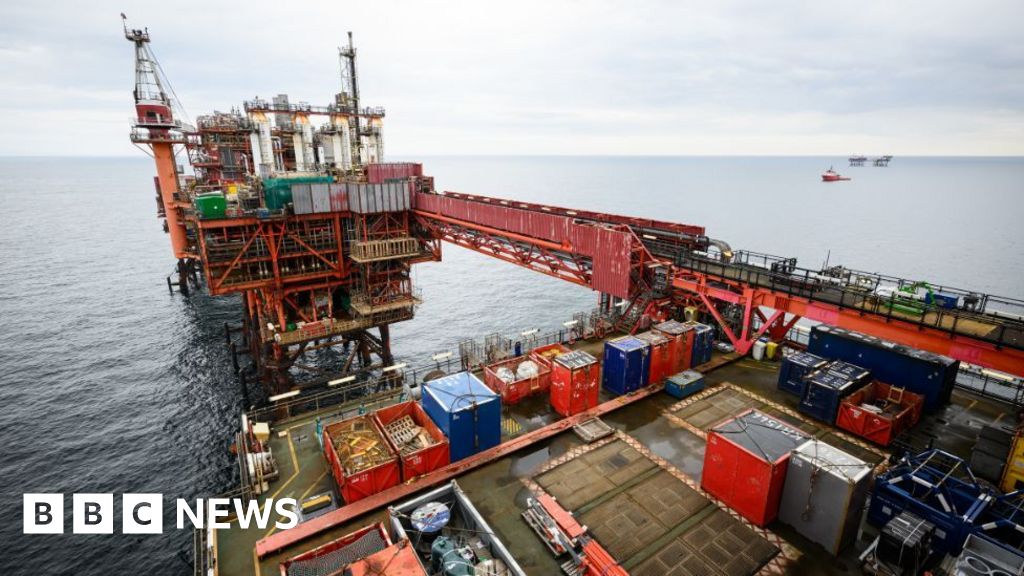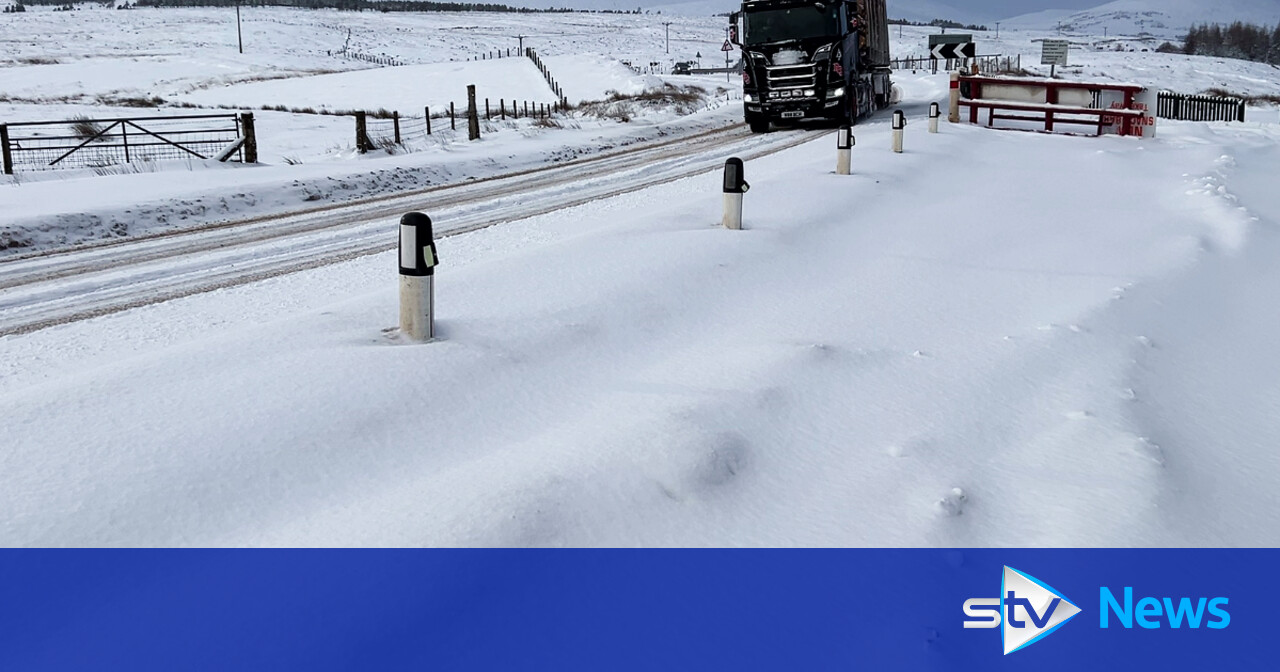Bussiness
Gers figures: Public spending deficit rises as oil revenues fall

 PA Media
PA MediaScotland’s public spending deficit increased by £3.6bn to £22.7bn last year as oil and gas revenues were cut in half.
The annual Government Expenditure and Revenue Scotland (Gers) report looks at taxes raised in Scotland and public spending for and on behalf of Scotland.
It found the difference was higher than the previous year’s £19.1bn, which had fallen from £23.7bn in 2021-22.
North Sea oil and gas revenues in 2023-24 dropped by £4bn to £4bn.
The deficit represented a 10.4% share of GDP, compared to 8.4% in 2022-23.
Scotland’s revenue in 2023-24 grew by £1.7bn to £88.5bn – an increase of 1.9% from 2022-23.
The government said this reflected growth in onshore receipts being partially offset by falling oil and gas revenue.
The Scottish revenue made up 8.1% of the UK total, similar to its population share.
Spending increased to £111.2bn, up from £104.9bn in 2022-23.
As a share of GDP, public spending remained at historically high levels at 51% of GDP, around five percentage points higher than prior to the pandemic.
The report estimates that spending per person in Scotland was £20,418 – £2,417 higher than the UK figure of £18,001.
The Scottish figure was up from £19,257 the previous year.
Meanwhile, revenue per person in Scotland was £60 higher than the UK average.
What is Gers?
Gers is a National Statistics publication and is prepared by Scottish government officials independently of ministers.
It estimates the amount of revenue raised through tax collected from people living in Scotland by both the Scottish and UK governments, and the amount that is spent by governments in and for Scotland.
That includes reserved spending such as the state pension, devolved spending such as the health service, and a share of spending that may take place in the rest of the UK or overseas on behalf of Scots, such as the armed forces and UK embassies.
The difference between revenue and spending is called the “net fiscal balance” – commonly referred to as the deficit.
The statistics have often been a key pillar of the debate on the finances of an independent Scotland.
The economic research body The Fraser of Allander Institute said Gers relied on some estimation but that was part of all economic statistics and was not a reason to dismiss the figures as “made up”.
Typically, Gers has shown tax raised in Scotland per head is just below that of the UK per head.
Spending per head in Scotland, however, has been significantly higher than the UK.
That is due to the way the Scottish Block Grant from the Treasury is calculated using the Barnett formula, which cemented higher spending per person when it was introduced in 1979.
‘No vision’
The Scottish Conservatives said the figures showed Scotland is better off within the UK.
Finance spokesperson Liz Smith MSP said the figures highlighted some “startling and inconvenient home truths” for the SNP.
“Despite record block grants, the SNP have squandered that funding settlement. Their financial mismanagement and waste has left Scots with higher taxes than anywhere else in the UK and brutal cuts to essential services,” she said.
Scottish Labour finance spokesperson Michael Marra said Scots would be right to ask why public services are not better given the extra spending.
“On attainment in our schools and waiting times in our hospitals people deserve so much better. We need to drive waiting times down and attainment up,” he said.
“So it is time for SNP to move beyond the division and focus on delivery. That’s the change Scotland needs.”
Finance Secretary Shona Robison said the deficit was “not a reflection on the finances or policies of the Scottish government – it is a reflection of UK government choices”.

Scotland is not alone in running a notional deficit.
One role of the UK government is to redistribute and equalise funding around the UK. That has meant a fixed formula for the block grant sent each year to Holyrood, Cardiff and Stormont, as well as “levelling up” funds for parts of England.
Along with higher income tax rates in Scotland, that gives higher spending per head than much of England, by £2417 last year. Meanwhile Scotland’s tax raised per head is usually similar to the UK figure. In the 2023-24 figures, revenue per head in Scotland was £60 more.
That includes a Scottish share of oil and gas tax receipts, and they can be volatile. They soared with the increase in global energy prices since 2021, pushing up profits, justifying the introduction of a windfall tax, and significantly increasing tax revenue.
Last decade, with lower prices, falling production and investment allowances, tax revenue has fallen low and even went negative one year.
But in 2022-23, Scotland’s share of the UK total – around 90% of it – was up to £7.9 bn. It fell back to £4bn in the most recent figures. That explains most of the increase in notional deficit in the past two years.
The future path of oil and gas revenue remains uncertain. Another surge in global prices will bring more profit and tax revenue.
But we may not see tax revenues like this again. There’s an underlying downward trend in production, as North Sea fields mature.
That downward trend is likely to accelerate if the Labour government in Westminster discourages further drilling with a higher windfall tax, reduced investment allowances, and no further licences.












